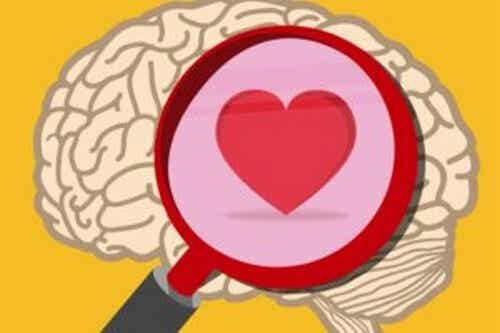Sometimes the mind acts as our worst enemy. Knowing the mechanisms it uses to fuel anxious thoughts can help us better manage these states and gain more control over our mental universe.

Written and verified by the psychologist GetPersonalGrowth.
Last update: 15 November 2021
The most common cognitive distortions in anxiety have a clear goal: to intensify suffering. The mind becomes a prisoner of some rigid and negative thought patterns which, like quicksand, trap reason, logic and inner balance. The world becomes threatening and any problem, however small, seems to have no solution.
Although these psychological dynamics are typical of conditions such as anxiety or depression, we all make use of cognitive distortions throughout our lives. Everyone has, for example, resorted to an emotional reasoning that turns into ideas such as "if I feel incapable and incompetent, it is because I am incompetent".
Well, even though our mind sometimes processes events incorrectly and harmful to us, most of the time we try to stay in control. When we calmly analyze reality, we are able to adopt more realistic (and constructive) conduct.
The real problem arises when emotions act as a shield, when external difficulties are too complex and our psychological resources are minimal. In these circumstances, unfortunately, it is easy to give rise to the worst cognitive distortions. We can learn, however, to recognize them, know how they work and render them powerless.
The most common cognitive distortions in anxiety
“I can't stand it, it's unacceptable, I'll go crazy”, “I'm worthless”, “we just have to wait for everything to get worse”. These are some arguments that cloud the mind and flood it with anguish and pessimism. By reinforcing these thoughts, one descends into an ever deeper pit from which it is difficult to ascend.
Cognitive distortions are traps of the mind, systematic patterns that lead us to distort the information around us, what happens and what we see. But the reason that leads us to use these mechanisms is more complex than it seems.
Sometimes this is due to a feedback system between emotions and thoughts: I'm sick and that's why I'm pessimistic; these negative thoughts fuel my malaise.
Other times, cognitive distortions are patterns we have always used without realizing it. A difficult childhood or careless parents can shape in us a wrong interpretative key of the world. In addition, if we suffer from low self-esteem, it is easy to reach these mental states.
Catastrophization
Thinking the worst to be ready. We consider it a good strategy when in reality it increases our anxiety exponentially.
They utter phrases such as: "if I do not pass this exam, I can say goodbye to my career, so I already know that I am worthless", or "in view of what is happening, it is clear that things will get worse and it will be impossible to find work ". They are examples of a very common cognitive distortion.
Dichotomous or polarized thoughts
Any thought that begins with an adverb such as "always", "never," all "or" nothing "is dictated by a polarized thought.
It is a question of interpreting reality according to only two filters: good or bad, with me or against me, will I get what I love or am a failure. The extreme and blunt value attributed to events is a form of self-inflicted suffering.
Selective abstraction
Sometimes our attention takes an unusual and twisted inclination: we see the negative side of life in every situation. Selective abstraction is one of the most common cognitive distortions in anxiety. It happens when we pay attention only to the dark side of reality, when we interpret events as a threat.
An example of this kind of thinking is: “I have invited all my colleagues to my birthday and Claudia is the only one who has not come. She surely hates me and everyone else felt compelled to come ”.
Personalization, one of the most common cognitive distortions in anxiety
"My boss is probably arguing in his office about some mistake I made ", "The cashier talks to me in a rude way, because I dislike people"; "The presentation of work I did today was a disaster and I will suffer the consequences, because I am worthless".
These reasonings are the result of a negative internal dialogue in which we personalize any event, as if everything were our responsibility or cause.
Arbitrary interference, we are not oracles
Anxiety has a tendency: it leads us to believe that we are the Oracle of Delphi. We adopt the role of fortune-tellers by assuming the results of various situations for certain. The most common are the following:
- We believe we know what others think of us. We do not stop torturing ourselves with ideas such as "surely he thinks I'm a failure, he doesn't like me, he feels sorry for ..."
- Another common mistake is to predict the future, to convince us that I will fail, I will fail, he will say no, everything will go wrong ...
Knowing which are the most common cognitive distortions in anxiety allows us to identify the thought patterns that feed the malaise and to understand the functioning of the human mind; we discover, therefore, that if we do not control and limit it, our mind can turn into our worst enemy.
We learn to take care of it, to see it as a garden in which to sow thoughts that help us, motivate us, make us feel important.


























